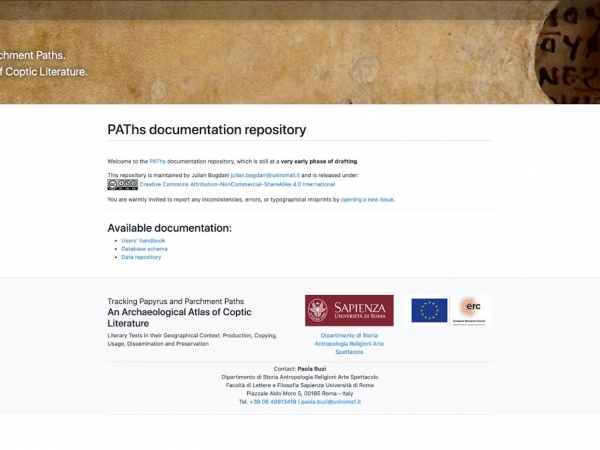The Archaeological Atlas of Coptic Literature that is the main scientific outcome of the ERC funded PAThs project has recently implemented new features and developed new tools freely usable by the scholarly community (respecting the copyright license).
Consequently, an updated and mature version of the Data and Documentation portal of the project has been published, being available at https://atlas.paths-erc.eu.
A separate section is dedicated to the publication of dataset created by the PAThs team (https://docs.paths-erc.eu/
Specific protocols developed to aid the data elaboration and production are also published in a detailed form (https://docs.paths-erc.eu/
Demos and technical guidelines have been written to better illustrate the published datasets.
It is particularly worth mentioning the drafting of a highly detailed and rich geo-database dedicated to the archaeology and architecture of the Christian religious buildings in Late Antique and Mediaeval Egypt (https://docs.paths-erc.eu/
At present, more than 150 Christian religious buildings have been georeferenced and vectorized using the already mentioned open protocol developed by PAThs.
The main and fundamental starting point of this work was the monumental volume of Peter Grossmann, Christliche Architecture in Ägypten (2001), whose maps, however, have been completely re-elaborated. Other sources (archaeological reports, first-hand data, etc.) will be used in the near future so as to expand the repertory.


